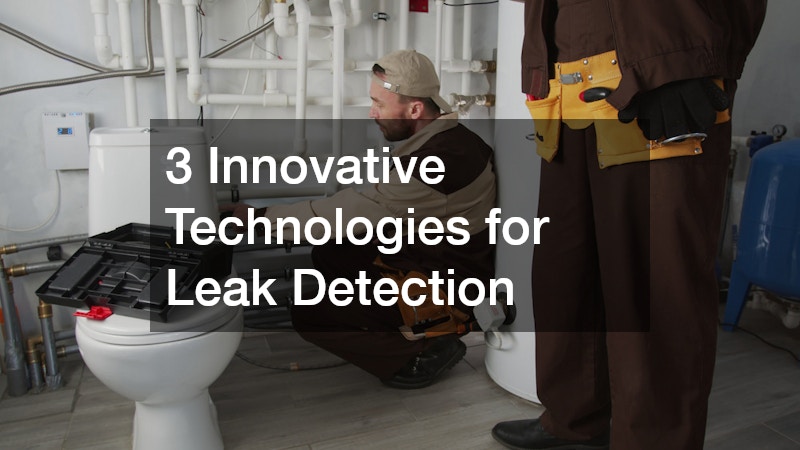Leaks in plumbing and infrastructure systems can lead to extensive damage, costly repairs and wasted resources. Traditionally, detecting a leak involved invasive inspections, educated guesses and significant time. However, technological advancements have transformed the process, making it faster, more accurate and far less disruptive.
Early detection is crucial not only for preserving property but also for reducing water waste and avoiding unnecessary service interruptions. Whether you’re a homeowner concerned about hidden plumbing issues or a facility manager overseeing large-scale systems, the latest innovations offer powerful tools for safeguarding your investment.
With an increasing focus on sustainability and efficient asset management, modern water leak detection methods are becoming essential components of proactive maintenance strategies.
In this article, we explore three innovative technologies revolutionising leak detection service for residential, commercial and industrial applications.
1. Acoustic Leak Detection Systems
One of the most advanced and widely adopted technologies is acoustic leak detection. This method relies on the principle that water escaping from a pressurised pipe produces a distinct sound. Trained technicians use highly sensitive microphones and digital sensors to capture and analyse these acoustic signals, allowing them to pinpoint the exact location of a leak, even when it’s underground or behind walls.
Modern acoustic systems are capable of filtering out background noise, which is especially useful in urban environments. They can differentiate between the normal flow of water and the unique sound signature of a leak. Many systems are integrated with artificial intelligence (AI) and machine learning algorithms, enabling real-time data analysis and pattern recognition that improves accuracy over time.
These tools are ideal for use in large-scale infrastructure projects, such as municipal water networks, where early detection of leaks can prevent water loss and environmental damage. By reducing the need for exploratory digging or wall demolition, acoustic systems offer a non-invasive and cost-effective solution.
2. Thermal Imaging Cameras
Thermal imaging, also known as infrared thermography, is another cutting-edge approach to leak detection. This technology captures and displays variations in surface temperature, which can indicate the presence of moisture or water escaping from a hidden leak.
When water leaks into a structure, it often changes the thermal characteristics of surrounding materials. For instance, wet insulation behind a wall or ceiling may appear cooler than dry sections. A thermal imaging camera can quickly scan large areas, revealing anomalies invisible to the naked eye.
This non-contact method is especially useful for building inspections, plumbing systems and waterproofing checks. It’s highly effective at locating leaks in underfloor heating systems, concealed pipes and roofs. Technicians can identify the source of the problem without dismantling entire sections of a property, significantly reducing labour and repair costs.
Another advantage of thermal imaging is its ability to provide a visual map of the leak’s spread, helping contractors develop a targeted repair strategy. These images can also be used for documentation and reporting, assisting property owners in insurance claims or preventative maintenance planning.
3. Smart Water Monitoring Sensors
Smart water monitoring systems represent the latest in leak detection innovation, combining IoT (Internet of Things) technology with real-time analytics. These compact, wireless devices are installed directly onto plumbing fixtures or within water lines, continuously monitoring water flow, pressure and temperature.
If a sudden drop in pressure or an abnormal flow rate is detected, the system can automatically alert homeowners or facility managers via smartphone notifications. Some systems are equipped with automated shut-off valves that activate to prevent further water damage.
These smart sensors are increasingly popular in modern homes, commercial properties and high-rise buildings where early intervention is critical. Many platforms offer cloud-based dashboards and historical usage reports, empowering users to track patterns and identify potential issues before they escalate into major problems.
One standout feature is the ability of these sensors to distinguish between different types of water usage. For example, the system might detect that a dripping tap, a running toilet and a burst pipe each have unique flow profiles. This level of intelligence not only improves accuracy but also reduces the likelihood of false alarms.
Installation is typically straightforward and does not require any major plumbing alterations. Over time, smart monitoring technology can lead to significant savings on water bills and maintenance costs, while promoting sustainable water use.
Embracing the Future of Leak Detection
Innovative leak detection technologies are transforming the way property owners, technicians and municipalities manage water systems. Acoustic systems offer precise, non-invasive localisation of leaks through sound analysis. Thermal imaging provides a visual guide to hidden moisture problems without damaging property. Smart water sensors deliver real-time alerts and automation that help prevent disaster before it strikes.
As water conservation and infrastructure reliability become more critical in Australia’s climate-sensitive environment, these technologies offer forward-thinking solutions for early detection and efficient repair. Investing in advanced leak detection not only protects your property but also contributes to the responsible stewardship of our natural resources.
By staying ahead of the curve with these technologies, businesses and homeowners alike can enjoy greater peace of mind, fewer repair disruptions and a smarter, more sustainable approach to water management.
.

